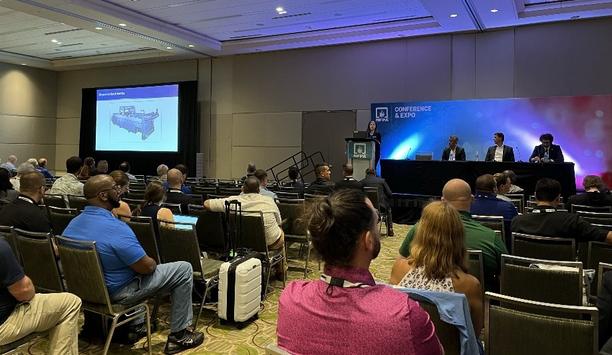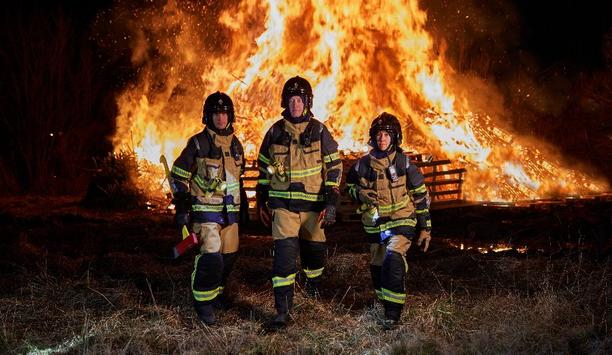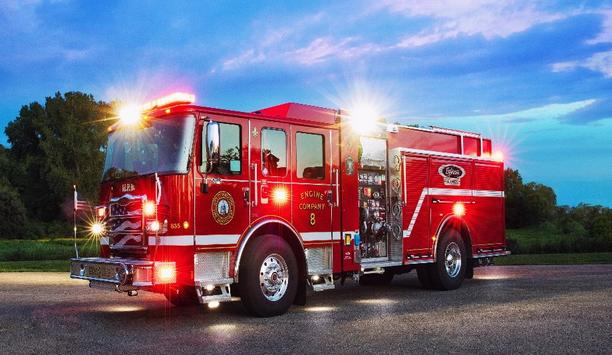Fire Safety Planning - Editor's Dispatch
The Dingell Act, signed into law in 2019, has far-reaching implications, including effects on fire management and emergency services. Officially named the John D. Dingell, Jr. Conservation, Management, and Recreation Act, the law impacts fire professionals and their operations and fire prevention strategies. The Dingell Act is a comprehensive public lands bill that touches on various aspects of natural resource management, conservation, and recreation. Fire mitigation efforts One of the key...
The integration of technology into the fire service has significantly enhanced operations, but it has also introduced new vulnerabilities. Cybersecurity has become a concern for fire departments, possibly impacting their ability to respond effectively to emergencies and protect communities. Potential problems emanating from cybersecurity concerns include a disruption of a community’s emergency response system. False alarms could result from malicious computer hackers manipulating...
Thousands of industry professionals gathered at the 2024 NFPA Conference and Expo in Orlando in June. The event brought together educational sessions, networking opportunities, and an exhibitor showcase. NFPA is the National Fire Protection Association. The NFPA annual meeting allowed members and the public to discuss and vote on proposed changes to fire codes and standards. “It’s a gathering place for people in the industry,” says Dr. Rodger Reiswig, Vice President of Indust...
Information can transform and guide emergency response. For example, in a structure fire, real-time sensor feeds throughout a building can help 911 and first responders understand how the fire is progressing. In fires and other emergencies, more information provides a better understanding and empowers potentially life-saving decision-making. Emergency response teams depend on information to guide their efforts and to deliver targeted assistance. On the front lines of emergency response are 911...
To be a smart city, modern urban areas leverage technology to improve operations and services, in effect deploying a network of sensors and devices to collect data on city operations such as traffic flow, energy use, and waste management. Analyzing the data points enables cities to identify areas for improvement and additional solutions to enhance efficiency, sustainability, and quality of life. But what are the opportunities for the fire service in today’s smart cities? Smart cities ena...
Wildfires swept through the Panhandle region of Texas earlier in 2024. The Smokehouse Creek Fire and the Windy Deuce Fire, both starting on Feb. 26, were the most significant outbreaks. The Smokehouse Creek Fire went on to become the second largest in U.S. history, burning over a million acres across Texas and Oklahoma before it was contained in mid-March. worst-ever wildfire As Texas battled its worst-ever wildfire, firefighters worked to mitigate fire and smoke damage. Among the challenges...
Fire departments responded to an estimated average of 32,160 home fires involving electrical distribution and lighting equipment each year in 2015–2019, according to the National Fire Protection Association (NFPA). Electrical fires cause scores of civilian deaths and hundreds of civilian injuries, as well as millions of dollars in property damage. Some of the electrical components that present fire hazards in the home include faulty electrical outlets and switches, worn or damaged compon...
Firefighters face unique stresses and hazards that cause a significantly higher risk of cardiovascular disease compared to the general population. In fact, cardiac events are the pioneering cause of on-duty deaths among firefighters and account for approximately 45% of duty-related firefighter fatalities in the United States, according to the U.S. Centers for Disease Control and Prevention (CDC). The frequency of firefighter deaths from cardiac events is evident in a cursory glance at local new...
NFPA 1900, a new standard, applies to any fire apparatus purchased beginning in January 2024. The National Fire Protection Association (NFPA) has introduced a new, broader standard that encompasses the content previously contained in separate standards for automotive, wildland fire, aircraft rescue and firefighting vehicles, and automotive ambulances. The new standard is a soft-covered book containing 375 pages and incorporating 34 chapters and 10 indexes. NFPA 1900 Standard Most fire departm...
An ISO rating is a score between one and ten that indicates how well a fire department serves its local community. Determined by the Insurance Services Office, Inc. (ISO), a subsidiary of Verisk Analytics, the rating is based on a Fire Suppression Rating Schedule (FSRS). The lower the score, the better the rating, with a score of one being the best possible rating. Evaluation criteria For communities, the ISO rating is a reference to an agency’s capabilities to extinguish a...
Technology increasingly makes it possible to identify wildfires early and before they get out of control. Networks of video cameras watch wildlands for the first hint of fire, and now artificial intelligence (AI) is being deployed to interpret data from those cameras and alert personnel about an imminent wildfire sooner than ever. FireScout AI FireScout is an AI program seeking to address the issue of wildfires. Using AI, the program can create awareness and “understand” smo...
Information systems drive greater situational awareness when emergency responders are rushing to the scene, including access to live-911 audio feeds, video of the unfolding emergency, and/or geographic information showing the locations of fire hydrants and the best travel route to ensure the most rapid response. Information tools to manage emergency response include the locations of teams, vehicles, and personnel available in three dimensions, including locations in a multi-story building. Pan...
A summer heat wave is a stark reminder of the aggravating impact of extreme temperatures on incidences of deadly medical emergencies, and the consequent greater burden on fire departments and emergency services. Temperature Extremes In addition to increasing the risk of wildfires from dry vegetation, temperature extremes also mean residents are more likely to suffer from dehydration or heat stress. Firefighters typically see a noticeable increase in calls during a heat wave as they stru...
Among residential fire hazards, a heating, ventilation, and air conditioning (HVAC) system is probably not at the top of the list. However, there are fire risk factors related to HVAC that can be mitigated through greater awareness and additional precautions. The reality is that an HVAC fire, like any other, can be dangerous and even deadly. flammable refrigerants The use of flammable refrigerants in HVAC systems is a growing trend since newer refrigerants that do not contribute to glo...
Chemicals broadly labeled as PFAs provide important properties to turnout gear used by firefighters, including better resistance to heat, water, and other hazards. Unfortunately, human exposure to per- and poly-fluoroalkyl substances (PFAs) has also been linked to heightened cancer risk. Research on the concentration of PFAs The U.S. National Defense Authorization Act of 2021 directed the National Institute of Standards and Technology (NIST) to identify the prevalence and concentration of PFAs...
Two grant programs designed to address staffing, equipment, training, and health and safety needs of firefighters are scheduled to ‘sunset’ in 2024 unless Congress reauthorizes the grant programs, and funding for the programs will run out unless Congress endows them for another year. Legislation to extend the programs has already passed the U.S. Senate. The Staffing for Adequate Fire and Emergency Response (SAFER) grant program provides funding to hire additional personnel to mainta...
Faster 5G data speeds and low latency profoundly impact the speed of detection and response in the fire market. When seeking early detection of wildfires, for example, faster data speeds translate almost directly into a faster response. New intelligent detection technology New intelligent detection technology for wildfires combines artificial intelligence (AI) with Internet of Things (IoT) connectivity to achieve earlier detection of wildfires that could spread quickly in dry, windy conditions...
Not so long ago, there was a time when a dirty helmet symbolized firefighter bravado. A dirty helmet was seen as a testament to how hard a firefighter worked and the horrible conditions he or she withstood when completing their duties. Sometimes, there was even concern that washing and cleaning a helmet would somehow reduce the likelihood of catching another fire in the near future. A dirty helmet no longer necessarily shows anything about a firefighter's competency or dedication to thei...
As motor vehicle designs evolve, including the addition of lithium-ion batteries, for example, firefighters and first responders must also adapt. They need information about the vehicle’s fuel and energy usage and guidance on extricating occupants following an accident. Emergency Response Guides (ERGs) can help responders by using standardized labels, colors, symbols, and graphics to make emergency information more complete, accurate, and accessible during training and response. ISO 1784...
Requirements of the Fire Safety Act of 2021 go into effect commencing 23 Jan. 2023 in the United Kingdom. First proposed in the wake of the Grenfell tragedy in 2017, the Act addresses facets to strengthen relevant enforcement powers and to hold building owners and managers to account. Annual fire checks “These latest changes are a milestone for fire safety within the built environment,” comments Robert Norton, UK Director of PlanRadar, a software company for the construction and re...
In Ann Arbor, Michigan, USA, in May 2022, a helmet camera recorded firefighters extinguishing a truck fire along I-94, catching every detail as sparks flew and firefighters hosed down the truck to suppress the blaze. Firefighters also hosed down the grass on the side of the freeway to put out hot spots and prevent a grass fire, MLive.com reported. The helmet-cam was part of a voluntary program that involves Ann Arbor firefighters wearing cameras when responding to active structure fires to cap...
The first volunteer firefighters in the United States predate the advent of career firefighters by more than a century. Benjamin Franklin started the first volunteer firefighting brigade in 1736, while the first professional fire department was established in Cincinnati in 1853. Still, recent growth has trended away from volunteer firefighting and toward more paid career firefighters. Recruiting firefighting volunteers For one thing, firefighting volunteers currently are harder to recruit and...
Electric fire vehicles, virtual reality (FR), and firefighting robots are among the new technology innovations in the fire market. They are also among the topics covered in the articles that attracted the most attention (i.e., received the most clicks) at thebigredguide.com in 2022. summary of important issues and technologies Also attracting eyeballs in 2022 were timely issues such as the labor shortage and the ongoing risk of cancer for firefighters. Fire garments were also among the topics...
Drones provide a useful tool for multiple functions within a modern fire department. The Los Angeles City Fire Department has been among the first to embrace the use of unmanned aerial systems (UAS) or drones, and the program has continued to grow in the last seven years, always guided by professionalism and accountability. training, standardization, and professional development What can other fire departments learn from the Los Angeles example? “You have to crawl first, then walk after...
Mobile and wearable devices perform a variety of tasks for first responders, including providing awareness, communication, and data sharing. However, cybersecurity vulnerabilities of these devices may inhibit how well first responders perform their duties, and ultimately put their safety at risk. The National Institute of Standards and Technology (NIST) addresses security concerns about first responder mobile and wearable devices in publication NIST IR 8235. This article includes highlights gl...
Given the fire service’s mission to fight fires, it is sadly ironic that there are arsonists in our midst. Admittedly, it’s a small number when compared to the multitude of firefighters who work tirelessly to achieve their mission. However, firefighter arsonists can have a huge negative impact on the credibility of the fire service, the public perception of firefighters, and even on morale in the ranks. In reality, hundreds of arrests each year in the United States of firefighters a...
Among the ways, garments protect firefighters is by reducing the heat stress and discomfort created by the need to carry heavy gear. Making the garments more comfortable to wear means less physical stress. Garments also help to protect firefighters from the toxic elements in the fire environment. The extent to which plastic materials can generate toxic smoke when they burn has previously been ignored but is now better understood. Concerted effort to understand end user As a manufacturer of fi...
Firefighters must be trained once or twice a year to keep their skills sharp. Providing that training in a safe environment is a challenge, and virtual reality (VR) enables exposure to the experience of firefighting. VR training In 2017, W.S. Darley & Co. first began offering VR training by partnering with virtual reality startup FLAIM, becoming their exclusive distributor in the United States. Today, Darley has sold VR systems from several manufacturers successfully to medium size fire d...
Virtual reality (VR) is an emerging tool in the fire service. In addition to its role in firefighter training, it is also emerging as a useful means of education about fire prevention. Home Fire Sprinkler Association (HFSA) is using VR to demonstrate up close and personal the revelatory fire prevention role of home fire sprinklers at the early stages of a fire. VR experience A VR video available from HFSA demonstrates how fire spreads in two identical rooms in a single-family home in Ashland C...
The adoption of electric fire apparatus is accelerating their footprint in the industry. Fire departments from Los Angeles to Madison, Wis., from Portland, Ore., to Mesa, Ariz., have embraced the technology of electric and hybrid vehicles in the fire industry and are demonstrating the practical capabilities of this new generation of technology for the fire service. Sustainable commitment More municipalities worldwide are committing to sustainability and climate goals. Furthermore, truck produc...
The New Future For Fire Agencies
DownloadThe Eight Key Trends in Fire Detection in 2023
DownloadA Digital Platform to Improve Fire Safety Compliance and Inspections
DownloadOvercoming the Challenges of Fire Safety in the Paper Industry
DownloadCarbon Monoxide: Creeping Killer Caught In The Act
Download

































